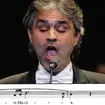Franz Schubert: Symphony No.9 in C ('Great')
Few Schubert fiends will disagree with this symphony’s nickname. Nevertheless, it was applied originally in order simply to distinguish it from another of his symphonies, which was also in the key of C major.
As a result, the other one (Symphony No.6) is landed with the epithet The Little C, something that must have occasionally led to confusion of a maritime nature.
Schubert’s Symphony No.9 was referred to in his own letters as ‘a grand symphony’, and concert-goers tend to agree that it is almost an hour of pure musical majesty. It was written just three years before the composer died, sketched over what must have felt like almost a born-again summer. His ill-health had suddenly and unexpectedly gone into remission; throughout 1825, when the Great was written, Schubert appeared to be completely well. Cue the huge, grand symphony, full of fresh life – arguably more powerful than any of his others. Here was a man who, sadly wrongly, thought he was cured. The fourth movement Allegro vivace is simply breathtaking, in the right hands.
Recommended Recording
Berlin Philharmonic Orchestra; Simon Rattle (conductor). EMI Classics: 3393822.
























